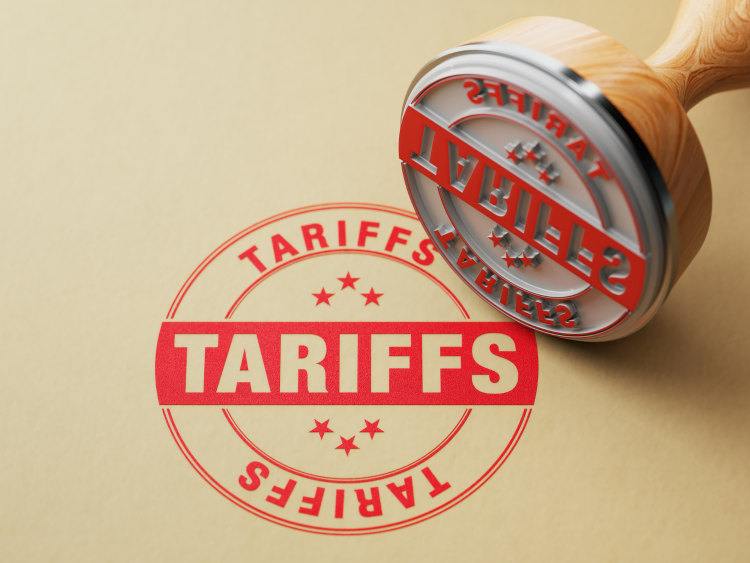Electrical

August 20, 2025
Parsing the new tariffs on semi-fabricated aluminum products
Written by Nicholas Bell
The latest expansion of Section 232 tariffs, effective Aug. 18, marks one of the more sweeping efforts yet to capture aluminum-intensive products entering the U.S.
The Bureau of Industry and Security, under the Department of Commerce, codified the list of steel and aluminum derivative products that will be subject to same 50% tariffs based on the Section 232 of the Trade Expansion Act of 1962 that primary and semi-fabricated aluminum products have been subject to since June 4.
The measure applies to the aluminum content in each item. A finished product will be assessed for the value of its aluminum components with that share taxed at the 50% duty rate.
In doing so, the government aims to push demand back toward U.S.-sourced, semi-fabricated aluminum and limit what it views as circumvention of the original tariffs.
Packaging and closures (HTS 7612.10.0000, 7612.90.5000)
Perhaps one of the most aluminum-intensive products just a stone’s throw away from a rolling mill is packaging.
These HTS codes include collapsible tubular containers and “other” aluminum containers under the broader category of “aluminum casks, drums, cans, boxes and similar containers (including rigid or collapsible tubular containers).”
Immediate applications for packaging include pharmaceutical closures, toothpaste tubes, and other medical items manufactured by extruders.
A common alloy used, in the form of foil, for this space is 8079, manufactured in the U.S. by Gränges, and 1235, also produced by Gränges and manufactured by JW Aluminum’s St. Louis facility.
Another common aluminum alloy used as a feedstock in the production of these tubes are high-purity alloys 1050 and 1070 slugs – small disc-shaped pieces used as a raw material.
These products fall under strict U.S. Food and Drug Administration (FDA) regulatory manufacturing processes, which likely will limit a quick-switch to domestic suppliers among downstream customers.
If manufacturers do decide to onshore production, U.S. extruders with the capability and certifications to produce collapsible tubes could see a backlog of demand. Those willing to invest in new production lines will still face delays as FDA approvals are secured.
The net result could be increased demand for niche aluminum slugs, which are cut from billets and fed into an extrusion press, tightening supply among a small pool of qualified domestic producers.
Power cables/wire (7614.10.1000)
Another specialty aluminum product now subject to import taxes are aluminum conductor steel reinforced (ACSR) wire. Specifically, this derivative would fit in the taxonomy of “stranded wire, cables, plaited bands and the like, including slings and similar articles, of aluminum, not electrically insulated, with a steel core and not fitted with fittings and not made up into articles”, mainly used in overhead transmission lines.
The tariff captures a vital segment of the grid supply chain, especially as new transmission projects are initiated to meeting sharp increases in demand from data warehouses to supplement artificial intelligence applications.
U.S. buyers have increasingly sourced ACSR from India and Bahrain. According to CRU data, Bahrain (coupled with Kuwait) has less than 15% of U.S. domestic power cable production capacity, leaving companies there highly exposed to the new tariff. India, meanwhile, has about 30% greater power cable production capacity than the U.S.
The common high-purity alloy used in the production of ACSR is 1350, which in turn has become a highly sought after form of scrap due to its versatility in melt mixes.
In the U.S., Southwire and Prysmian account for more than 85% of domestic power cable capacity, according to CRU data.
One mitigating factor is that not all cable and wire producers manufacture redraw rod themselves. Instead, strands are produced from redraw rod, already subject to Section 232 tariffs, and purchased from third-party producers like Alcoa or Alubar.
Of the two major power cable producers, Prysmian is particularly exposed to additional tariff costs on imported redraw rod, while Southwire is at least partially vertically integrated for redraw rod production.
Alcoa’s Massena facility can produce around 25,000-35,000 metric tons (mt) of aluminum wire rod, according to company filings submitted to the Department of Commerce. Alubar’s New Madrid, Missouri, rod mill had an intended production capacity of just under 100,000 mt/yr when it was acquired from Noranda, according to SEC filings.
Industry estimates of Southwire’s capacity submitted to the Department of Commerce place production capacity at a little more than 135,000 mt/yr, the majority of which likely feeds internal operations as opposed to third-party sales.
That said, U.S. power cable consumption in the first half of 2025 is on track to still experience a domestic shortfall of more than 100,000 mt of power cable to meet its needs and the expansion of transmission lines and expectations of greater consumption owing to data center build outs is likely to increase needs over time.
Conclusion
The addition of these 7600-series products to Section 232 tariffs underscores how Washington is increasingly targeting semi-fabricated aluminum categories central to both consumer packaging and the electrical grid.
Collapsible containers and closures directly affect high-purity alloys tied to the medical and consumer goods sectors, while stranded wire and conductor tariffs strike at the heart of power infrastructure.
Both represent sectors where substitution is difficult, certification is strict, and demand is expected to remain strong.
Want to see how Prysmian is expanding operations to meet demand? Read about the expansion in their Texas power cable facility here.







